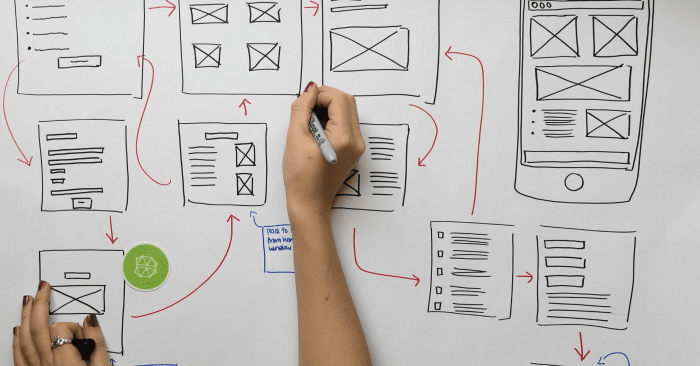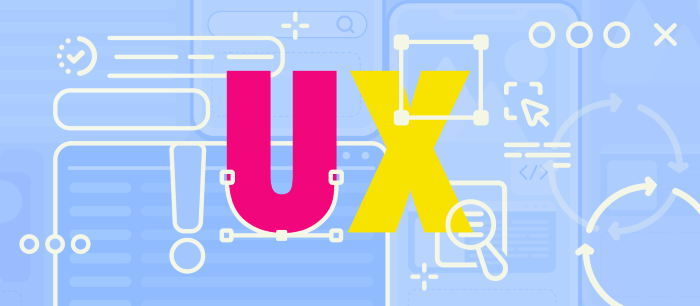UX design (user experience) is not only, and not so much about pretty pictures, flowcharts, and smart interfaces in apps and other IT products. It is primarily about the logic behind the screens, buttons, and fields. And about the experience that the user gets from contact with the product. In this article we discuss How to Increase Business Profits with UX Design.
In the end, it all comes down to whether the customer chooses the product, stays with it long term, and recommends it to their friends or goes to a competitor. So UX design prices fully justify themselves.
If you have interacted with the app and went through 5, 10, or 20 screens and you did not notice them, because it was comfortable and easy to “communicate” with the interface, this is the very correct UX, for the sake of which UX-designer thinks and polishes all the interface elements.
Table of Contents
How UX Design Affects Profits: 5 Points

Reduces the Cost and Duration of Development
UX analysis increases the time and adds extra points to the budget. But in fact, it turns out that UX study gives projects the right vector from the start and crosses out problems in the future. Considering users’ needs when creating a project is much more beneficial than designing and then fixing problems if they can be solved at all.
UX Design Finds Bottlenecks in the App
UX testing helps to identify non-obvious bottlenecks that affect app conversion and sales.
UX Design Increases Conversion to Sales
The simpler and clearer the interface of the app and the better-designed user scenarios are, the higher the probability that the user will make a purchase. Evaluating user preferences can help uncover the reasons for a low conversion rate.
Reduces Promotion Costs
Indirectly, UX design affects this as well. If the initial UX research is done and the UX design is thought-out in detail, the app will “communicate” with the audience in an easy and accessible way: on the way to performing the target action; the user will not come across obscure buttons, forms, and so on.
The user has a positive experience with the app. They are more likely to return for repeat purchase and recommend the product on social networks, on feedback boards, and in verbal communications.
According to research, 23% of users will tell 10 or more people they know about a positive experience with the app. By comparison, 13% said they would share with 15 or more people if they had a negative experience with the app. So UX design also makes a significant contribution to creating a positive image of the company, which facilitates marketing efforts when promoting it.
Reduces Help Desk Costs
If customers can easily navigate the app, place an order and find the information they need, they don’t need to contact the helpdesk every time. This can significantly reduce their training and maintenance costs.
How to implement UX design when creating an app or an application?

The Analytics Phase: User Research and Competitor Analysis
It helps to make the app or application understandable and user-friendly for the audience. It is known that a company’s business tasks are successfully solved only if the user’s tasks are closed in parallel.
What is it for? At the idea level, to understand the basic set of functionalities for the user and assess the possibilities of its implementation. Before the design phase, determine where and how the user closes their needs to be met.
Before redesigning the application, in order to find out which features are implemented in the competitor’s products and what can be used to differentiate themselves.
User Analysis
To better understand what the target audience of a product lives by and wants, we use quantitative and qualitative research methods and methodologies such as JTBD, CJM and others.
What kind of research to use should be chosen depending on the goals and objectives. Usually, these are interviews, web analytics, 5-second tests, usability testing.
Personality Method
Once the target audience of the product is studied and the user profile is created, it is necessary to create an image of a typical representative of each segment, a persona.
The User Journey
It is a step-by-step compilation of the user’s path through the IT product screens, starting from entering the application to performing the target action according to a certain scenario.
Such a detailed illustration of user interaction with the product is called a user flow. The UX designer works alone or in tandem with an analyst to compose the scenarios.
2. Design Phase: Information Architecture (IA)
After the UX study, the complete structure of the digital product must be created. This stage is one of the most important in design. The goal of creating an IA is to lay out all the content so that the user can easily find what they need.
Some of the basic IA techniques include:
- Creating an application map that shows the top-level relationship between pages and content;
- creating an intelligence map that illustrates the relationship of elements with a detailed description of functionality;
- Developing a wireflow, a screen layout showing important interface elements, all possible scenarios, status messages, and errors.
Card sorting also helps to design the architecture of the application. It allows you to combine different elements into several categories according to certain parameters. As a result, the UX designer receives the basic structure of the content, which serves as the basis for the next steps.
Using all of the above methods, the framework of the application is created, after which you can start making prototypes.
3. Prototyping
When the wireframe is ready and there is an understanding of the product structure, the prototyping stage follows — visualizing the schematics into screens.
Prototypes are created so that the customer is not distracted by colors and bright pictures, but concentrates on the logic of user interaction with the interface.
What kind of prototypes there are:
- A text prototype, which includes basic blocks of text, headings, and other necessary components;
- A wireframe, a screen sketch showing the main elements schematically;
- a highly detailed prototype showing all the elements and requiring more time to draw.
- Interactive prototype — a clickable screen that responds to actions.
4. UI Design
In the final stage, when all the logic is designed and there is a sketch of screens, you need to determine the style and color scheme, develop the interface elements (buttons, menus, sliders, animations, illustrations), and impose it on the prototypes.
That is, to make it so that the user is clear and pleasant to interact with the application.
What is created at this stage:
- Moodboards — tools for inspiration, defining basic colors, and style;
- references — examples that are used as a guide when developing the design concept;
- UI-kit — a library that contains all the UI elements, typography, colors, and components.
After the final stage, all that remains is to properly pass the layouts to developers. How can this be done?
- Agree with the programmers on the form in which it is more convenient for them to receive the source code.
- Discuss in advance where it is better to leave the clarification of important nuances.
- Make a guide on the screens.
- Make a presentation and present the project to developers so that they receive a general idea of it and pay attention to difficult points to remove controversial issues.
Form UI-library, which collects components that can be used by the developer. This reduces the time spent on the layout but is suitable only for simple applications.
How to increase the conversion rate of the application and thus the profit of the business? The wheel has long been invented: UX design works great for this purpose.
Take care of your user, study their problems, communicate with them in their language, and create friendly and understandable interfaces. No one says it’s easy, but it’s worth it.
Join The Logo Community
We hope this article about How to Increase Business Profits with UX Design has been helpful. If you would like more personal tips, advice, insights, and access to our community threads and other goodies, join me in our community.
You can comment directly on the posts and have a discussion with Andrew, the Founder of The Logo Creative.
*TIP – We recommend Skillshare to learn online. There are tons of classes for everything including graphic design, web design, marketing, branding and business-related courses. Get a free trial with our link and you won’t regret it Trust us!


